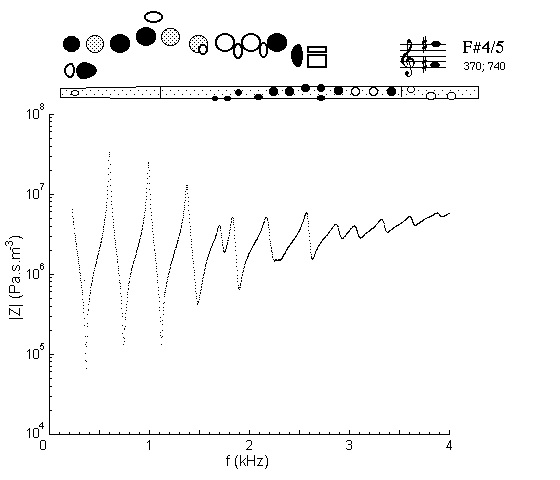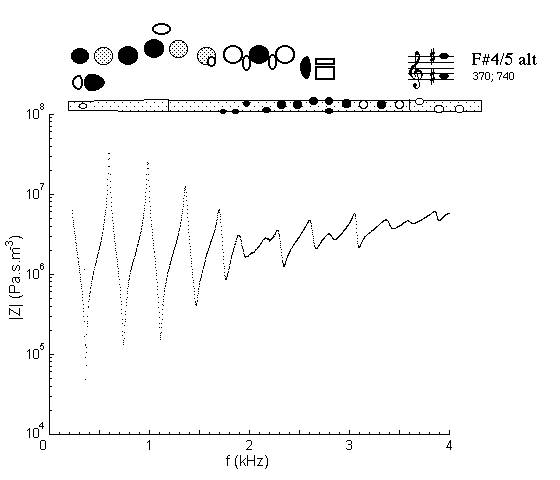| Acoustics of baroque, classical and modern flutes |
modern flute
|
F#4 |

|
Fingering Acoustic schematic Non-specialist introduction
to acoustic impedance |
The flutist uses the same fingering for F#4 and F#5, but changes the speed, length and shape of the jet. The first five minima can be played. All lower minima support harmonics in F#4. In F#5, only the even minima are involved.
Alternative Fingering |
modern flute C foot |

|
Fingering Acoustic schematic Non-specialist introduction
to acoustic impedance |
This fingering is used in E-F# trills and in some fast passages. This is acoustically equivalent to a cross fingering (hole closed downstream of an open tone hole). The difference between the two F# fingerings is less than that between the E fingerings because the standard F# fingering is also, to a lesser extent, a cross fingering. The first three minima can be played.
| Acoustic measurements are available for these flutes - modern B, modern C, classical C, classical D, classical flared, baroque Sound clips are available for modern B, classical flared and baroque |
To compare flutes, it is easiest to open a separate browser window for each instrument. |